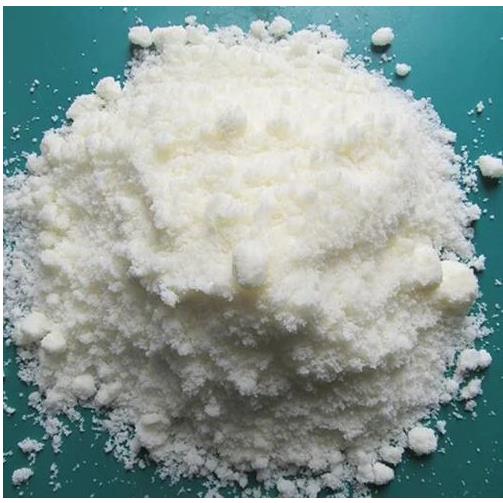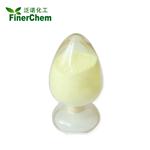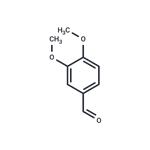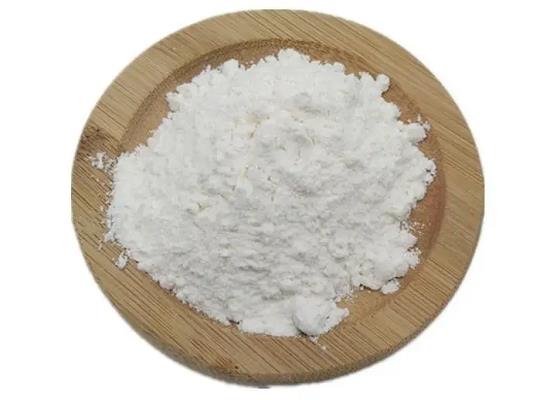Unlocking the Potential of Veratraldehyde: A Comprehensive Exploration
Feb 8,2025
Introduction
Veratraldehyde (also known as 3,4-Dimethoxy Benzaldehyde) is an important compound isolated from fruits such as mint, ginger, bourbon vanilla and raspberry. It has a very sweet, woody, vanilla and heliotrope flavor and is widely used in perfume, agrochemical and pharmaceutical industries. In addition, veratraldehyde is also used as a food additive, odorant and redox cycler.

Figure 1 Characteristics of Veratraldehyde
Synthesis Methods
Veratraldehyde can be prepared by continuous treatment of resveratrol with a catalyst system consisting of SBA-15/TiO2/SO4/Ni. The results showed that the selectivity and yield of veratraldehyde were the highest under the optimal reaction conditions (including the reaction time of catalyst SBA-15/TiO2/SO4/Ni(8%) for 2 hours). This catalyst worked best, with a selectivity and conversion of veratraldehyde of 100% and 99.5%, respectively.
Applications
Mosquito Repellent Effect
The study found that veratraldehyde and WJ-1041 formulations containing 10% veratraldehyde had repellent effects against female Aedes albopictus and Culex pipiens pallens mosquitoes and nymphs of Haemaphysalis longicornis ticks. Veratraldehyde had similar or lower repellency than n,n-diethyl-m-toluamide (DEET) against Aedes albopictus, but was more active than DEET against Haemaphysalis longicornis ticks. The 10% veratraldehyde solution was comparable to 20% DEET in repellency against both mosquito species. When the WJ-1041 formulation (10% veratraldehyde) and 10% DEET were compared for repellency against Culex pipiens pallens, Aedes albopictus, and Haemaphysalis longicornis, both showed similar repellency and complete protection time (CPT) values. However, the effects varied slightly depending on the insect tested. Veratraldehyde has little or no skin absorption. The pharmacokinetic parameters (Cmax and Tmax) of veratraldehyde in rat blood samples were not different from those of the control group. Based on these results, veratraldehyde has a high probability of being commercialized as a repellent against infectious pests in the near future.
Pharmaceutical intermediates
Veratraldehyde can be used as an intermediate in the synthesis of some drugs, including aminoquinacine, hoquizil, piquizil, prazosin, quinazoline, thiapamil, toborine, verazine, and vertrobutin.
References
[1]Molleti J, Yadav G D. Green synthesis of veratraldehyde using potassium promoted lanthanum–magnesium mixed oxide catalyst[J]. Organic Process Research & Development, 2017, 21(7): 1012-1020.
[2]Dhinagaran G, Harichandran G, Suvaitha S P, et al. The catalytic activity of SBA-15 supported CuO for the selective oxidation of veratryl alcohol to veratraldehyde[J]. Molecular catalysis, 2022, 528: 112454.
[3] SOON-IL KIM. Repellency of Veratraldehyde (3,4-Dimethoxy Benzaldehyde) against Mosquito Females and Tick Nymphs[J]. Applied Sciences-Basel, 2021, 11 1: 4861. DOI:10.3390/APP11114861.
[4] N. YOGANANDHAN . TiO2/SO4/Ni@SBA-15 catalysts for the selective oxidation of veratryl alcohol to veratraldehyde in a continuous reactor[J]. Molecular Catalysis, 2023, 546: Article 113250. DOI:10.1016/j.mcat.2023.113250
- Related articles
- Related Qustion
- Veratraldehyde: synthesis and applications in organic synthesis Dec 19, 2023
Veratraldehyde is synthesized by the oxidation of vanillin using potassium dichromate and Lewis acids under solid phase conditions, serving as a catalyst and precursor for important chemicals.
- Veratraldehyde: properties, applications and safety Jul 31, 2023
Veratraldehyde is a colorless solid and can react with compounds, forms new organic compounds with potential as antitumor and antibacterial agent; caution regarding toxicity.
- What is 3,4-Dimethoxybenzaldehyde? Jan 6, 2020
3,4-Dimethoxybenzaldehyde, also known as methyl vanillin, methyl vanillin, , having a vanilla (Vanillabeans ) fragrances synthetic perfumes, but also uses more pharmaceutical intermediates.
Supplementation with pyridoxal 5'-phosphate monohydrate can synthesize neurotransmitters such as dopamine and serotonin, maintaining a healthy nervous system.....
Nov 4,2025Biochemical EngineeringOlivetol, sourced from tropical plants, undergoes biotransformation, yielding three metabolites. Electrochemical detection aids cannabinoid synthesis research, highlighting its importance.....
May 8,2024APIVeratraldehyde
120-14-9You may like
- 3,4-Dimethoxybenzenecarbonal
-

- $5.00 / 25KG
- 2025-12-12
- CAS:120-14-9
- Min. Order: 1KG
- Purity: 99%
- Supply Ability: 500mt/year
- Veratraldehyde
-

- $1.00 / 25KG
- 2025-12-11
- CAS:120-14-9
- Min. Order: 1KG
- Purity: 99%
- Supply Ability: 10 mt
- Veratraldehyde
-

- $29.00 / 5g
- 2025-12-08
- CAS:120-14-9
- Min. Order:
- Purity: 98.73%
- Supply Ability: 10g






